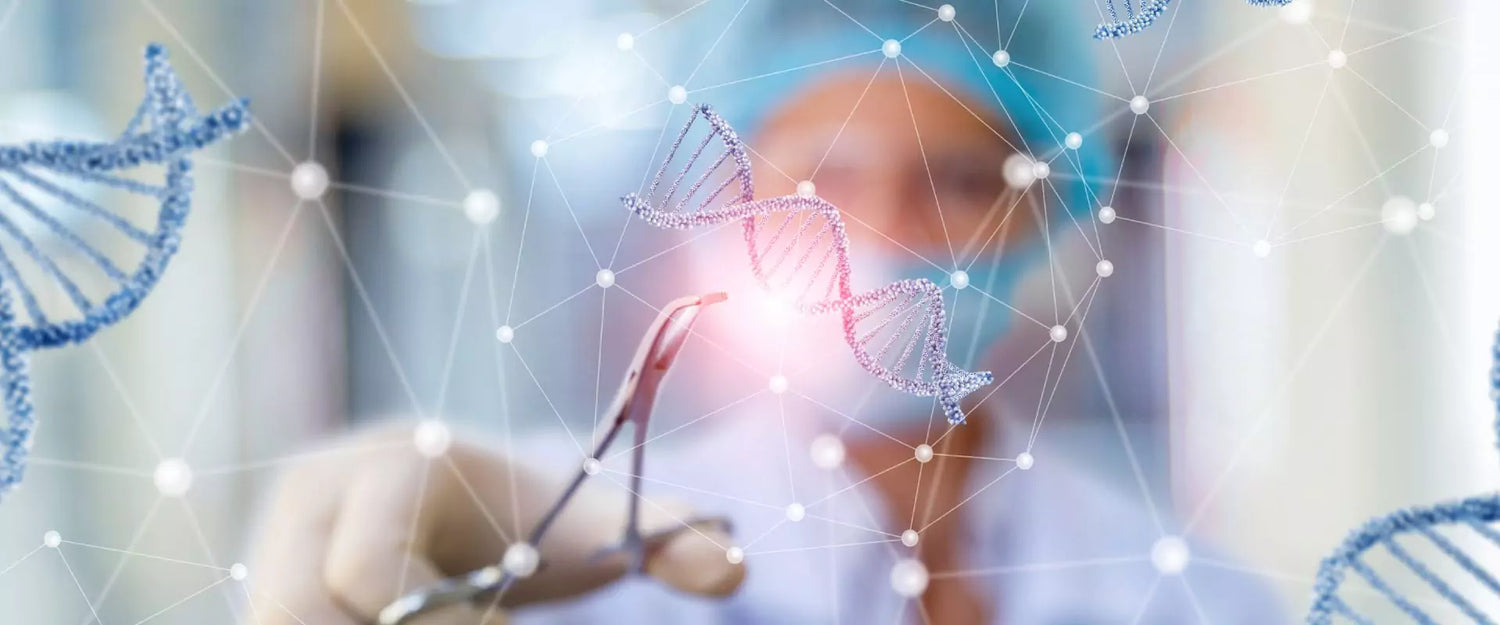Have you ever been to the fountain of youth? Yeah, the same fountain of youth for which Alexander the great Spent his life searching yet didn’t find it.
Ah! Poor Alexander.
But you should be glad that you don’t need to spend your whole life for searching the fountain of youth.
Don’t believe me, ask Science about it.
Nicotinamide mononucleotide (NMN) is a naturally occurring organic compound found in fruits and vegetables that we eat.
NMN belongs to the family of nucleotides, i.e., the building blocks of life.
At the molecular level, it is similar to other nucleotides such as RNA because NMN is made up of 3 parts, i.e., a nitrogenous base, a sugar and a phosphate group. However, unlike RNA, which is used to build DNA, NMN produces Nicotinamide Adenine Dinucleotide (NAD).
So, you most probably think, what is so special about NAD+, and why should one care about it?
To get the answer, you must first think about a car; how luxurious a car can be, but without any proper fuel, it doesn’t start.
Similarly, the NAD+ is the fuel needed for our cells. NAD+ is a very small yet important molecule that helps to drive many cellular functions in our body.
NAD+ is a helper molecule that is needed by various proteins and enzymes to carry out their functions.
For example, NAD+ is particularly important in metabolic activities, including glycolysis, the TCA Cycle (also known as the Krebs Cycle or Citric Acid Cycle), and the electron transport chain, which takes place in our mitochondria and is used to generate cellular energy.
How NAD and NMN are Naturally Produced?
While we know that nicotinamide adenine dinucleotide (NAD) is a critically used coenzyme in the normal functioning of cells, it is essential to know how it is synthesized normally from its precursors.
The main building blocks used for the synthesis of NAD are tryptophan (an amino acid), nicotinamide (Nam), and nicotinic acid (NA), also called niacin nicotinamide riboside (NR) and NMN. All of these molecules are interestingly different forms of vitamin B3.
There are many pathways to produce NAD⁺ in our body. NMN is made from B vitamins in the body by attaching them to sugar-phosphate by the enzyme NAMPT. Another process is based on NR phosphorylation which also results in the formation of NMN.
However, the one with the help of NAMPT is the most crucial step in maintaining the level of NAD⁺ as it is a rate-limiting step. This essentially means that if the concentration of NAMPT is low, it can cause decreased levels of NMN, which ultimately results in lower levels of NAD⁺.
Why is NAD+ Drained in Our Body?
There are different reasons for the drain of NAD⁺ on a cellular level. The major contributing factor of them is the repair process of the damaged DNA. As we age, the metabolic stress increases, a result of which the chromosomes become unstable. To maintain them in an optimized state, some special enzymes like sirtuins use NAD⁺ as a coenzyme on a large scale, which causes depletion of NAD⁺ in the body.
In another important cell organelle- mitochondria, NAD⁺ is used in vital energy generation pathways. That is the reason it is critical to maintain the levels of NAD⁺ in the body.
How NAD+ Can Be Replenished
The most evidence-based technique for assuring enhanced lifespan and health continues to be calorie restriction. Researchers discovered that those who eat fewer calories have higher levels of NAD+ in their bodies. Calorie restriction has been found to have considerable anti-ageing effects in monkeys, in addition to boosting NAD+.
Apart from calorie restriction, the levels of NAD⁺ are naturally maintained by eating certain foods such as dairy milk, mushrooms, whole grains, yeast and fish such as sardines, salmons, and tuna.
Although these foods contain NAD+; however, the NAD+ amounts contained in these foods are insufficient to impact intracellular concentrations. Therefore, NMN or NAD supplements must be taken to increase NAD+ levels in the cells.
Why are NMN Supplements Important?
NMN improves our mitochondrial function. Mitochondria are our cells’ power generators, supplying nearly all of the energy they require to function and thrive. Our mitochondria grow more damaged as we age, causing a slew of issues. Thus, increasing NMN levels can help.
NMN can also help to lessen the levels of inflammation that begin to develop as people age (a process known as “inflammaging”).
NMN can also benefit stem cell health, allowing them to live longer and replicate more because the number of stem cells in the body decreases as people age.
NMN has been shown in scientific research to help aged animals cope with numerous aspects of ageing. NMN boosted their metabolism as they got older, increased blood supply to the brain, increased stamina, and even improved fertility.
The main importance of NMN is that it is more readily absorbed in the body than the NAD+ itself. This maintains the bioavailability of NMN to be converted into NAD⁺ as the need comes. Therefore, taking NMN supplements makes more sense than other NAD supplements.
In the end
The presence of NMN is helpful in optimizing cellular functions, which happen to slow down ageing, as well as those which prevent age-related maladies in the long run. These include diabetes, cancer, neurodegeneration, and other immune conditions.
Therefore, Gerontologists, i.e., ageing scientists, focus on this wonder molecule as a potential anti-ageing drug, thus making it a “Molecular Fountain Of Youth”.

















Leave a comment
All comments are moderated before being published.
This site is protected by hCaptcha and the hCaptcha Privacy Policy and Terms of Service apply.